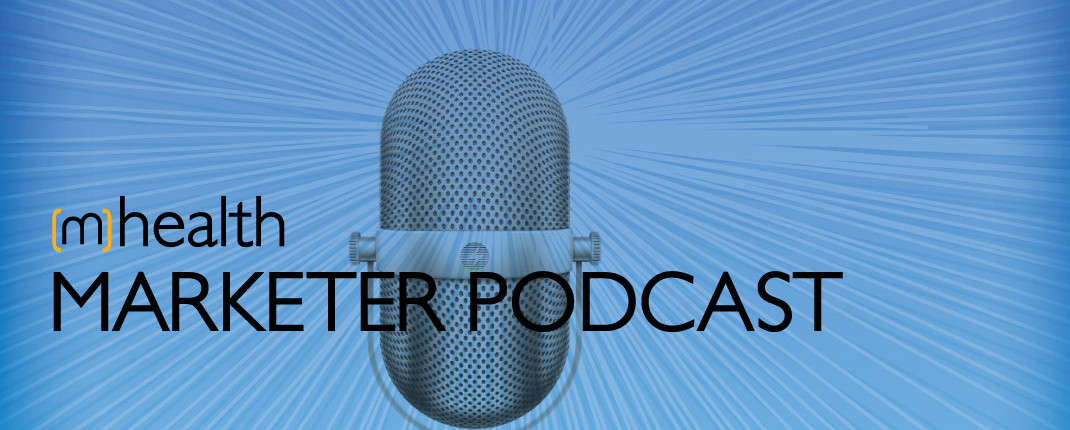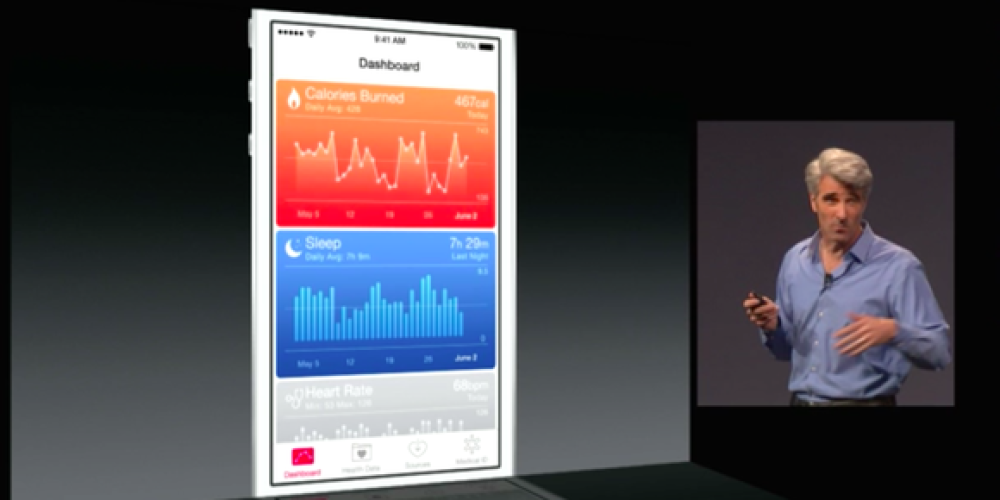In the previous four podcasts, we talked about the importance and impact of storytelling for digital health marketing. In the next four mHealthMarketer podcasts, we’ll take a closer look at the strategy behind telling your story and the process involved in fitting your story into an effective marketing plan.
To create maximum impact in the marketplace and achieve your business objectives demands a strategic approach and a purposeful process. Telling your marketing story isn’t an accident. It’s fine-tuned and purpose driven based upon research and facts. Yes, it takes some work and effort, but it’s a smart approach that positions your brand as different from your competition.
The topics we’ll cover during the next four podcasts are:
- Digital Health Marketing Assessment- An Inside Look at your Content and Communications Assets
- How to Test and Nail Down Your Buyer Personas- External Research and Viewpoint
- Identify Your Content and Communications Gaps
- Creating a Digital Content Driven Branding and Positioning Action Plan
These four strategy areas and the processes used are all designed to help you tell your digital health marketing story with the greatest impact.
About This Show:
Each Wednesday, Sam Stern, founder and Chief Marketing Technologist at Modallic, an mHealth marketing and brand development firm reveals his winning Mobile, Digital and healthcare IT marketing strategies, shares real life Mobile Health marketing success stories, and offers breakthrough marketing tips and tactics so you can lead the field with your Mobile Health and healthcare IT solutions.
Discover how to craft compelling stories to open doors with key health care system decision makers. Understand how an agile marketing mindset and approach positions you to create a profitable, sustainable business.
Gain insights into Mobile Health and healthcare IT marketing strategy, how to tell your unique mHealth and healthcare IT marketing story, creating your mHealth buyer personas, how to integrate an agile marketing process, mobile health and digital health brand development and market positioning, and learn what really works in attracting and landing mobile health and healthcare IT clients.
Show Notes:
Digital Health Marketing Assessment: How to Take an Inside Look at Your Content and Communications Assets
The first step of your digital health marketing assessment is to…
Identify Your Objectives
Your firm’s goals and objectives light the path of where you’re headed. It’s the vision of the value you offer to the market. How does your mobile health product or healthcare IT solution help improve healthcare delivery and the health of individuals based upon the reality of what internal assets you currently have and the challenges you face.
First Off…
Establish Your Benchmarks – Establishing where you are, where you want to go, and what your organization is capable of accomplishing involves looking at the following three facets of your organization:
-
Assess your staff and resources – Is your staff tech savvy? Are they“digital natives”? Do they understand and use social media? Do you have talented writers, photographers, or videographers who can create compelling digital content? If not on staff, do you have connections and relationships with these talent sets? Do you have the right tools and software to create, publish, and promote digital content?
-
Come up with a plan for distribution – The marketing and promotion of your digital media is more important than the creation. Create a plan to promote and distribute your digital media.
-
Assess existing assets and executive leadership commitment – What communications assets do you already possess, such as an existing website, blog, social media accounts and followers, presentations, white papers, etc.? Is your executive leadership fully supportive and on board with the digital media direction?
Next…
Review your Communications Objectives – This is the part of your strategic planning and thinking where you dig deep to get at the core essence of your marketing message.
-
Identify key marketing messages that will be supported by digital media – List the elements of your firm’s marketing story that you feel will appeal to the buyers of your digital health products and services.
-
Identify core values and strategic objectives- What does your business stand for and stand against? Why do you do what you do?
-
Make Use of core competencies in digital media communications – How do you plan to leverage your business’s strengths? How will you get the most out of the writing, photography, videography, social media, graphic design talent at your disposal?
Now, you’re ready to…
Evaluate the Digital Health Landscape – After you’ve taken a close look inside your organization, the next step is to examine what messages are already being communicated to your target buyer prospects.
-
List competitors’ content – How are other healthcare IT firms using digital media to spread the word and tell their stories? What forms of content do they use- blogs, video, white papers, podcasts, webinars? Do they seem to favor a format, or dominate the conversation on a social media platform?
-
Monitor important pieces of information on an ongoing basis – Set up your “Listening Station”. Tools you’ll want to use include:
Google Alerts– Monitor your organization’s name, competition, and top keywords
Feedly– This replaces Google Reader as the tool to instantly deliver news, new blog posts, and information to you automatically, and allows you to easily share it.
Evernote- Another tool to use to capture, organize, and share information across multiple devices, including desktop, tablet, smartphone.
TweetBeep or Twitter Alerts– Get Twitter mentions of your organization, cause, or keywords emailed or SMS automatically.
Monitor Google Trending Topics, Twitter Trending, and Google+ Trending Topics – Are there relevant real-time news events you can jump on to create instant buzz?
Monitor active conversations taking place on relevant LinkedIn Groups, Facebook Groups, and Google + Communities.
This “Listening” activity should take about 10-15 minutes a day. The most important part is not the monitoring but doing something with what you’re hearing and learning. Figure out the business value of what you’re learning and route it to the right places and team members. Turn your listening into action.
-
Share findings in a team setting- Bring all your staff, outsourced team members, and stakeholders up to speed. Inform them of the goals and the firm’s direction. Tap the synergy of your team and collaborate to determine your very best approach.
Outline Your Digital Media Communications Objectives- Determine where you want to go and what you wish to accomplish. Paint a picture of what the goal of your business looks like.
For example, your goal is to secure three major healthcare systems as clients for your mobile healthcare IT solutions within the next 12 months…
Show how each marketing initiative and piece of content produced moves you closer to this goal. Make every employee and outsourced talent feel like an important part of your mission. This encourages them to understand their role and how it fits into your vision and objectives.
Finally, after you’ve done your homework, now you’re ready to…
-
Map out your objectives for the next 12-18 months – One smart technique many of the leading businesses use is to establish three sets of objectives:
- Absolute Minimum- No matter what happens… the building burns down, your cat dies… you will get this done.
- Realistic- Based upon what you know and your current resources, this is what you can expect to accomplish with an honest effort.
- Blue Sky- The best possible outcome you can imagine if everything comes together.
Follow this strategy and process. You’ll get crystal clear on your vision and objectives. You’ll know where you want to take the business and what you’re trying to achieve. You’ll also have the tools to communicate this vision to your key stakeholders- your employees, outsource team, vendors, investors, and influencers.
You’ll also identify the content and communications assets you have available that you can leverage.
Finally, you have a way to listen to the conversations happening in your market. You’ll hear what your competition is saying, and more importantly, how your prospects are responding.
Next week…
How to test your key marketing messages with your buyer personas… and nail down your marketing story.
Will You Help Me Get This Message Out There?
Want to get more tips and strategies for marketing your digital health firm? There are three ways you can enjoy these tips and strategies, share them with friends, and help me grow this movement to end the lack of innovation in healthcare:
Sign up for this podcast on iTunes. Click here to subscribe to the podcast on iTunes.
Subscribe to this podcast through the Podcast app on your iPhone or Android phone (free from the app store).
Leave a review — Share an honest sentence or two about the show on the iTunes page and give it a star rating (this makes a HUGE difference in helping others find the show).
Share the Podcast — Share this episode with friends and colleagues. An easy way to do that is by using the social media buttons down below.
Finally, if you have a question you’d like answered on a future show — or if you have any feedback in general — please let me know: sstern@modallic.com
Thanks again for your support!









4 thoughts on “#005 – Digital Health Marketing Assessment”